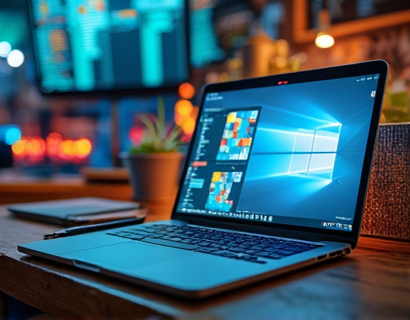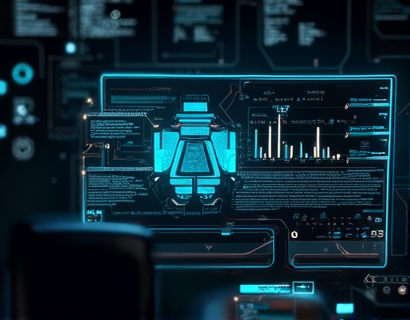Decentralized File Management: Streamlining Business Collaboration with a Secure and Efficient Online Platform for Teams
In today's fast-paced business environment, effective collaboration and secure file management are essential for success. As teams become more distributed and remote work becomes the norm, the need for a decentralized file management system has never been more critical. This article explores how decentralized file management can streamline business collaboration, enhance productivity, and provide a secure online platform for teams.
The Importance of Decentralized File Management
Decentralized file management refers to the distribution of data across multiple locations rather than relying on a central server. This approach offers several advantages, including improved security, increased accessibility, and enhanced collaboration. By decentralizing file management, businesses can ensure that their critical information is not only secure but also readily available to team members, regardless of their location.
Benefits of Decentralized File Management
1. Enhanced Security
One of the primary concerns for businesses today is data security. Traditional centralized systems are vulnerable to cyberattacks, data breaches, and system failures. In contrast, decentralized file management systems distribute data across multiple nodes, making it significantly more challenging for unauthorized users to access sensitive information. Additionally, decentralized systems often employ advanced encryption techniques, ensuring that data remains secure both in transit and at rest.
2. Improved Accessibility
Decentralized file management allows team members to access files from anywhere, at any time. This flexibility is particularly beneficial for remote teams or organizations with multiple locations. By eliminating the need for a central server, businesses can ensure that their employees have seamless access to the information they need to perform their jobs effectively. This increased accessibility can lead to faster decision-making and improved overall productivity.
3. Streamlined Collaboration
Collaboration is at the heart of any successful business. Decentralized file management systems facilitate real-time collaboration by allowing team members to work on documents simultaneously, share files effortlessly, and communicate effectively. This streamlined collaboration can lead to more innovative solutions, faster project completion, and a more engaged workforce.
4. Cost Efficiency
Implementing a decentralized file management system can also lead to significant cost savings for businesses. By reducing the reliance on expensive centralized servers and infrastructure, organizations can lower their IT costs. Additionally, the increased efficiency and productivity gained from improved collaboration can result in higher revenue and profitability.
Key Features of an Effective Decentralized File Management System
1. User-Friendly Interface
An effective decentralized file management system should have a user-friendly interface that allows team members to navigate the platform easily. A well-designed interface can reduce the learning curve for new users and encourage adoption across the organization. Features such as drag-and-drop functionality, intuitive search capabilities, and customizable dashboards can enhance the user experience.
2. Robust Security Measures
Security should be a top priority for any decentralized file management system. Look for platforms that offer end-to-end encryption, multi-factor authentication, and regular security audits. These measures can help protect sensitive data from unauthorized access and ensure compliance with industry regulations.
3. Seamless Integration
To maximize the benefits of a decentralized file management system, it should integrate seamlessly with existing tools and software used by the organization. This includes collaboration tools, project management software, and communication platforms. By ensuring compatibility with other systems, businesses can create a cohesive workflow that enhances productivity.
4. Scalability
As businesses grow, their file management needs may change. A decentralized file management system should be scalable, allowing organizations to add or remove users, storage capacity, and features as needed. This flexibility ensures that the system can adapt to the evolving needs of the business.
Implementing a Decentralized File Management System
Transitioning to a decentralized file management system requires careful planning and execution. Here are some steps to consider when implementing such a system:
1. Assess Your Needs
Before selecting a decentralized file management system, assess your organization's specific needs. Consider factors such as the size of your team, the types of files you manage, and your security requirements. This assessment will help you choose a platform that aligns with your business goals.
2. Choose the Right Platform
Research and compare different decentralized file management platforms to find the one that best meets your needs. Look for features such as security measures, user interface, integration capabilities, and scalability. Reading user reviews and seeking recommendations from other businesses can also provide valuable insights.
3. Train Your Team
Once you have selected a platform, provide training for your team to ensure they understand how to use the system effectively. This training should cover essential features, security protocols, and best practices for file management. Encouraging team members to ask questions and provide feedback can help improve the overall adoption of the new system.
4. Monitor and Optimize
After implementing the decentralized file management system, monitor its performance and gather feedback from users. This information can help you identify areas for improvement and optimize the system to better meet the needs of your team. Regularly reviewing security measures and updating protocols is also essential to maintain data protection.
Future Trends in Decentralized File Management
The landscape of decentralized file management is continually evolving. Here are some trends to watch for in the coming years:
1. Increased Use of Blockchain Technology
Blockchain technology is gaining traction in the realm of decentralized file management. By leveraging blockchain's inherent security features, businesses can create tamper-proof records of file transactions and ensure data integrity. This technology can also facilitate secure sharing and collaboration among multiple parties.
2. Artificial Intelligence Integration
Artificial intelligence (AI) is poised to play a significant role in decentralized file management. AI can help automate tasks such as file organization, data classification, and security monitoring. By integrating AI into decentralized systems, businesses can enhance efficiency and reduce the risk of human error.
3. Enhanced Collaboration Tools
As remote work continues to rise, the demand for advanced collaboration tools within decentralized file management systems will increase. Features such as real-time editing, video conferencing, and integrated communication channels will become essential for fostering teamwork and collaboration.
4. Focus on User Experience
As competition in the decentralized file management space grows, providers will prioritize user experience to differentiate themselves. This focus will lead to more intuitive interfaces, personalized features, and improved customer support, ultimately benefiting businesses and their teams.
Conclusion
Decentralized file management is revolutionizing the way businesses collaborate and manage information. By prioritizing security, accessibility, and efficiency, organizations can streamline their file management processes and enhance team productivity. As technology continues to evolve, embracing decentralized solutions will be crucial for businesses looking to stay competitive in an increasingly digital world. By implementing a robust decentralized file management system, teams can work more effectively, protect their critical data, and drive innovation within their organizations.











































